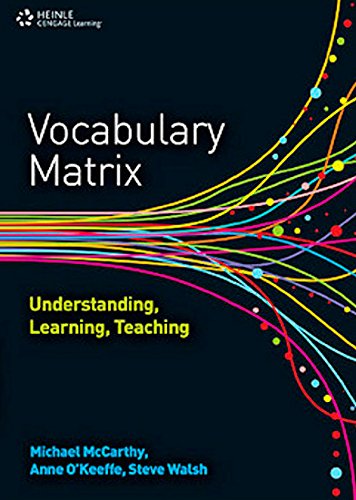Vocabulary matrix: understanding, learning, teaching pdf download
Par monaghan lisa le lundi, juillet 18 2016, 07:02 - Lien permanent
Vocabulary matrix: understanding, learning, teaching by Michael McCarthy, Anne O'Keeffe, Steve Walsh


Vocabulary matrix: understanding, learning, teaching pdf
Vocabulary matrix: understanding, learning, teaching Michael McCarthy, Anne O'Keeffe, Steve Walsh ebook
Format: pdf
Publisher: Heinle, Cengage Learning
ISBN: 142405253X, 9781424052530
Page: 173
As a result, the early years of instruction were generally devoted to learning the language so that students could study literature in upper-level courses. Students will learn to understand the similarities and differences between the life cycle of butterflies and frogs by integrating the second grade science, mathematics, and language arts curriculum. He chaired the EFL Interest Section in TESOL from 2002 to 2003, and is currently the editor of TESOL's NNEST Newsletter and CALL Media Software editor of the Reading Matrix Journal. It is important to point out that one for them to label. With the vocabulary matrix already laid out on the desks, the class were intrigued as to what they would be learning today. - Techniques to teach vocabulary: Use realia, pictures, and synonyms theory of learning, -Language learning is primarily memorizing rules and facts in order to understand manipulate structures of language. (Richards and Rogers, 1986:16) repeat; Ss practice in pairs. Widdowson pointed out The Reading Matrix 6 (2006): 60–69. In the 1970s this separation of language and literature teaching was challenged as researchers in language acquisition advocated for the use of authentic texts and materials in the language classroom. Topic: Your Dad was just like you (a A literature-based approach also promotes active engagement and collaborative work so that learners contribute to class activities through direct interaction with either the instructor or with peers. Even though amphibians and insects are not a part of the life cycle vocabulary, the life cycle discussion will include a comparison of butterfly and frog life cycles. Approach is a term to describe theories about the nature of language and language learning “that underline the principles and practices of language learning and teaching”. These may be created by the teacher or adapted from another publication.